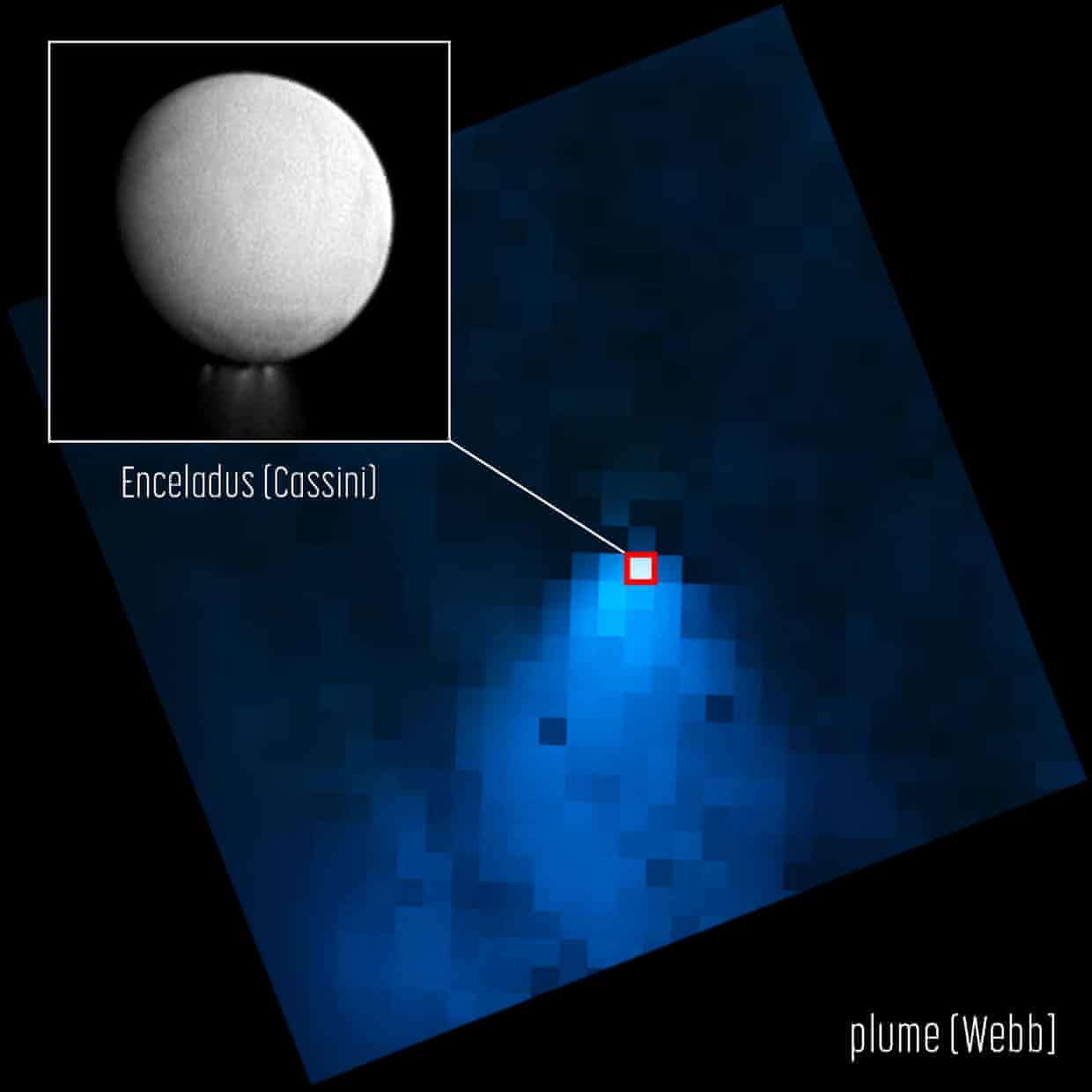
NASA's James Webb Space Telescope [JWST] has discovered that Enceladus, the sixth largest moon of Saturn that is one of the most likely places to find extraterrestrial life, is generating a water vapour plume that is 9,000 kilometres long.
Enceladus has an approximate diameter of 500 kilometres. Its relatively high concentration of phosphorous in solution, which is thought to be essential for life, was found last year. In the cracks of the Moon's surface on Enceladus, volcanoes erupt, releasing ice particles, water vapour, and organic compounds into space.

In a press release, Geronimo Villanueva, the first author of the study and a planetary scientist at Nasa’s Goddard Space Flight Center in Maryland, stated, "When I was looking at the data, at first, I was thinking I had to be wrong. It was just so shocking to detect a water plume more than 20 times the size of the moon. The water plume extends far beyond its release region at the southern pole.”
An Olympic-sized swimming pool could be filled in a few hours based on measurements made by the telescope, which revealed that Enceladus was losing 300 kg of water every second in the plume.
The water vapour floods into the moon's orbit as a result of Enceladus' rapid rotation around Saturn, where it condenses into a massive ring-like structure known as a torus. According to data from the observatory, about 30% of the water that is released from Enceladus feeds the torus, with the remaining water spreading into Saturn's surroundings.
In a forthcoming publication in Nature Astronomy, the researchers argue that the findings show the JWST's capacity to fully comprehend the ocean world. The telescope, they say, provides fresh opportunities for studying Enceladus and prepares the way for upcoming missions.
Share This Post On
0 comments
Leave a comment
You need to login to leave a comment. Log-in
